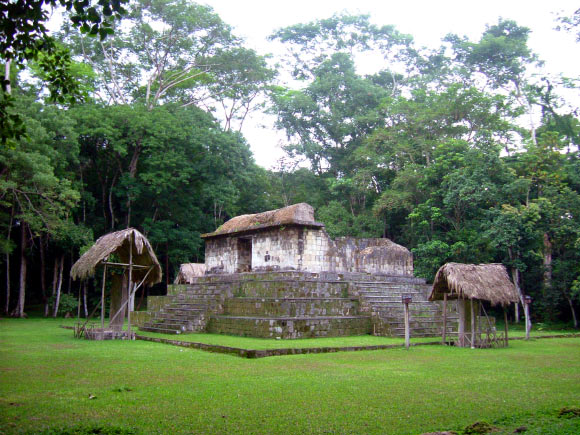Results of excavations at Ceibal, an ancient Maya site in Guatemala, challenge two prevailing theories on how the ancient Maya civilization began, suggesting its origins are more complex than previously thought.

Excavations at Ceibal suggest that the origins of early Maya civilization are more complex than previously thought. The image shows the temple plaza at Ceibal (Sébastian Homberger / CC BY-SA 3.0)
Archaeologists typically fall into one of two competing groups with regard to the origins of Maya civilization. The first group believes that it developed almost entirely on its own in the jungles of what is now Guatemala and southern Mexico. Others believe that the Maya civilization developed as the result of direct influences from the older Olmec civilization and its center of La Venta.
“We really focused on the beginning of this civilization and how this remarkable civilization developed,” said Prof Takeshi Inomata of the University of Arizona, lead author of a study published in the journal Science.
Researchers found that Ceibal actually predates the growth of La Venta as a major center by as much as 200 years, suggesting that La Venta could not have been the prevailing influence over early Mayan development.
“That does not make the Maya civilization older than the Olmec civilization – since Olmec had another center prior to La Venta – nor does it prove that the Maya civilization developed entirely independently.”
What it does indicate, is that both Ceibal and La Venta probably participated in a broader cultural shift taking place in the period between 1,150-800 BC.
“We’re saying that the scenario of early Maya culture is really more complex than we thought,” said co-author Victor Castill, also from the University of Arizona. “We have this idea of the origin of Maya civilization as an indigenous development, and we have this other idea that it was an external influence that triggered the social complexity of Maya civilization. We’re now thinking it’s not actually black and white.”
There is no denying the striking similarities between Ceibal and La Venta, such as evidence of similar ritual practices and the presence of similar architecture – namely the pyramids that would come to be the hallmark of Mesoamerican civilization but did not exist at the earlier Olmec center of San Lorenzo.
However, researchers don’t think this is the case of simply one site mimicking the other. Rather, the team suspects that both the Maya site of Ceibal and the Olmec site of La Venta were parts of a more geographically far-reaching cultural shift that occurred around 1,000 BC., about the time when the Olmec center was transitioning from San Lorenzo to La Venta.
“Basically, there was a major social change happening from the southern Maya lowlands to possibly the coast of Chiapas and the southern Gulf Coast, and this site of Ceibal was a part of that broader social change,” Prof Inomata said. “The emergence of a new form of society – with new architecture, with new rituals – became really the important basis for all later Mesoamerican civilizations.”
______
Bibliographic information: Takeshi Inomata et al. 2013. Early Ceremonial Constructions at Ceibal, Guatemala, and the Origins of Lowland Maya Civilization. Science, vol. 340, no. 6131, pp. 467-471; doi: 10.1126/science.1234493







